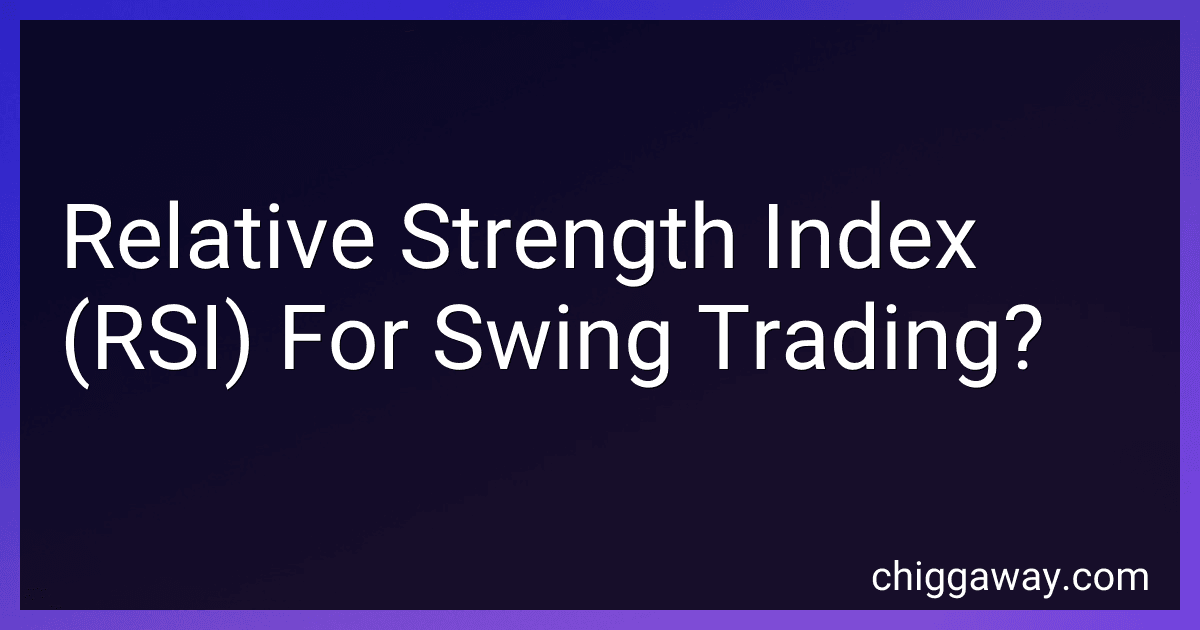Posts (page 13)
-
 10 min readThe Percentage Price Oscillator (PPO) is a technical analysis tool used by traders and investors to identify potential buying and selling opportunities in the financial markets. It is a variation of the popular Moving Average Convergence Divergence (MACD) indicator.The PPO measures the difference between two moving averages of different time periods and expresses it as a percentage.
10 min readThe Percentage Price Oscillator (PPO) is a technical analysis tool used by traders and investors to identify potential buying and selling opportunities in the financial markets. It is a variation of the popular Moving Average Convergence Divergence (MACD) indicator.The PPO measures the difference between two moving averages of different time periods and expresses it as a percentage.
-
 10 min readThe Parabolic SAR (Stop and Reverse) is a technical indicator used in trading to determine potential entry and exit points in a market. It is primarily utilized in trending markets where price movements show a clear direction. The indicator was developed by J. Welles Wilder Jr., a renowned technical analyst.The Parabolic SAR consists of small dots on a price chart, either above or below the price bars.
10 min readThe Parabolic SAR (Stop and Reverse) is a technical indicator used in trading to determine potential entry and exit points in a market. It is primarily utilized in trending markets where price movements show a clear direction. The indicator was developed by J. Welles Wilder Jr., a renowned technical analyst.The Parabolic SAR consists of small dots on a price chart, either above or below the price bars.
-
 10 min readThe Chaikin Oscillator is a popular technical indicator used in trading to measure the accumulation and distribution of money flow in a stock or market. Developed by Marc Chaikin, it combines both volume and price data to provide insights into the strength or weakness of a trend.To read the Chaikin Oscillator, traders usually look for the following signals and patterns:Divergence: When the Chaikin Oscillator moves in the opposite direction of the price trend, it indicates a potential reversal.
10 min readThe Chaikin Oscillator is a popular technical indicator used in trading to measure the accumulation and distribution of money flow in a stock or market. Developed by Marc Chaikin, it combines both volume and price data to provide insights into the strength or weakness of a trend.To read the Chaikin Oscillator, traders usually look for the following signals and patterns:Divergence: When the Chaikin Oscillator moves in the opposite direction of the price trend, it indicates a potential reversal.
-
 10 min readCandlestick patterns are a popular tool used by traders to analyze market sentiment and make informed trading decisions. These patterns are formed by the arrangement of price data (open, high, low, and close values) over a specific time period.Interpreting candlestick patterns involves understanding the different patterns and their implications on price movement.
10 min readCandlestick patterns are a popular tool used by traders to analyze market sentiment and make informed trading decisions. These patterns are formed by the arrangement of price data (open, high, low, and close values) over a specific time period.Interpreting candlestick patterns involves understanding the different patterns and their implications on price movement.
-
 10 min readBollinger Bands are a widely used technical indicator that helps traders analyze market volatility and identify potential trading opportunities. They consist of a simple moving average (SMA) line in the middle and two additional lines called the upper band and lower band.The calculation of Bollinger Bands involves three main components: the period, the standard deviation, and the multiplier. The period represents the number of data points used to calculate the SMA.
10 min readBollinger Bands are a widely used technical indicator that helps traders analyze market volatility and identify potential trading opportunities. They consist of a simple moving average (SMA) line in the middle and two additional lines called the upper band and lower band.The calculation of Bollinger Bands involves three main components: the period, the standard deviation, and the multiplier. The period represents the number of data points used to calculate the SMA.
-
 8 min readRelative Strength Index (RSI) is a technical analysis oscillator that is widely used by swing traders to identify potential buy or sell signals in financial markets. It measures the strength and weakness of price movements over a specified period of time, generally 14 days, and can be applied to any market, such as stocks, currencies, or commodities.The RSI is a momentum indicator that oscillates between 0 and 100.
8 min readRelative Strength Index (RSI) is a technical analysis oscillator that is widely used by swing traders to identify potential buy or sell signals in financial markets. It measures the strength and weakness of price movements over a specified period of time, generally 14 days, and can be applied to any market, such as stocks, currencies, or commodities.The RSI is a momentum indicator that oscillates between 0 and 100.
-
 10 min readBollinger Bands are a popular technical analysis tool used in stock trading. They were developed by John Bollinger in the 1980s and are often used by traders to identify trends, potential reversals, and overall market volatility.Bollinger Bands consist of three lines on a stock price chart. The middle line is a simple moving average (SMA), usually based on a 20-day period. The other two lines are called the upper band and lower band.
10 min readBollinger Bands are a popular technical analysis tool used in stock trading. They were developed by John Bollinger in the 1980s and are often used by traders to identify trends, potential reversals, and overall market volatility.Bollinger Bands consist of three lines on a stock price chart. The middle line is a simple moving average (SMA), usually based on a 20-day period. The other two lines are called the upper band and lower band.
-
 8 min readEase of Movement (EMV) is a technical analysis indicator that measures the ease with which prices move in a given period. It provides insights into the strength and sustainability of a price trend. EMV combines volume and price data to offer traders a way to assess the buying and selling pressure in the market.The concept behind EMV is that as prices move with greater ease, it indicates a lower level of resistance, making it easier for the asset to continue its trend.
8 min readEase of Movement (EMV) is a technical analysis indicator that measures the ease with which prices move in a given period. It provides insights into the strength and sustainability of a price trend. EMV combines volume and price data to offer traders a way to assess the buying and selling pressure in the market.The concept behind EMV is that as prices move with greater ease, it indicates a lower level of resistance, making it easier for the asset to continue its trend.
-
 9 min readKeltner Channels is a technical analysis tool used in swing trading to identify potential price reversals and volatility in the market. It consists of three lines plotted on a price chart: the upper band, lower band, and middle line.The middle line is typically a simple moving average (SMA) calculated using a specific period, such as 20, 50, or 100.
9 min readKeltner Channels is a technical analysis tool used in swing trading to identify potential price reversals and volatility in the market. It consists of three lines plotted on a price chart: the upper band, lower band, and middle line.The middle line is typically a simple moving average (SMA) calculated using a specific period, such as 20, 50, or 100.
-
 11 min readThe Money Flow Index (MFI) is an oscillator used in technical analysis to measure the strength and direction of money flowing in and out of a particular asset or security. It provides insights into the buying and selling pressure in the market and helps traders identify potential reversal points.The MFI is primarily used for day trading and short-term trading strategies. It combines price and volume data to generate a single value oscillating between 0 and 100.
11 min readThe Money Flow Index (MFI) is an oscillator used in technical analysis to measure the strength and direction of money flowing in and out of a particular asset or security. It provides insights into the buying and selling pressure in the market and helps traders identify potential reversal points.The MFI is primarily used for day trading and short-term trading strategies. It combines price and volume data to generate a single value oscillating between 0 and 100.
-
 6 min readThe Elder-Ray Index is a technical analysis tool developed by Dr. Alexander Elder to help traders identify trends, momentum, and potential buying or selling opportunities in the market. It consists of two components: the Bull Power and Bear Power indicators.The Bull Power indicator shows the strength of bulls (buyers) in the market by calculating the difference between the high price and the exponential moving average (EMA) of your choice.
6 min readThe Elder-Ray Index is a technical analysis tool developed by Dr. Alexander Elder to help traders identify trends, momentum, and potential buying or selling opportunities in the market. It consists of two components: the Bull Power and Bear Power indicators.The Bull Power indicator shows the strength of bulls (buyers) in the market by calculating the difference between the high price and the exponential moving average (EMA) of your choice.
-
 7 min readFibonacci retracements are a technical analysis tool used by day traders to identify potential levels of support and resistance in a price chart. It is based on the Fibonacci sequence, a series of numbers where each number is the sum of the two preceding ones.In day trading, Fibonacci retracements are commonly used to forecast possible price levels where a stock or other financial instrument might experience a temporary reversal before continuing its primary trend.
7 min readFibonacci retracements are a technical analysis tool used by day traders to identify potential levels of support and resistance in a price chart. It is based on the Fibonacci sequence, a series of numbers where each number is the sum of the two preceding ones.In day trading, Fibonacci retracements are commonly used to forecast possible price levels where a stock or other financial instrument might experience a temporary reversal before continuing its primary trend.